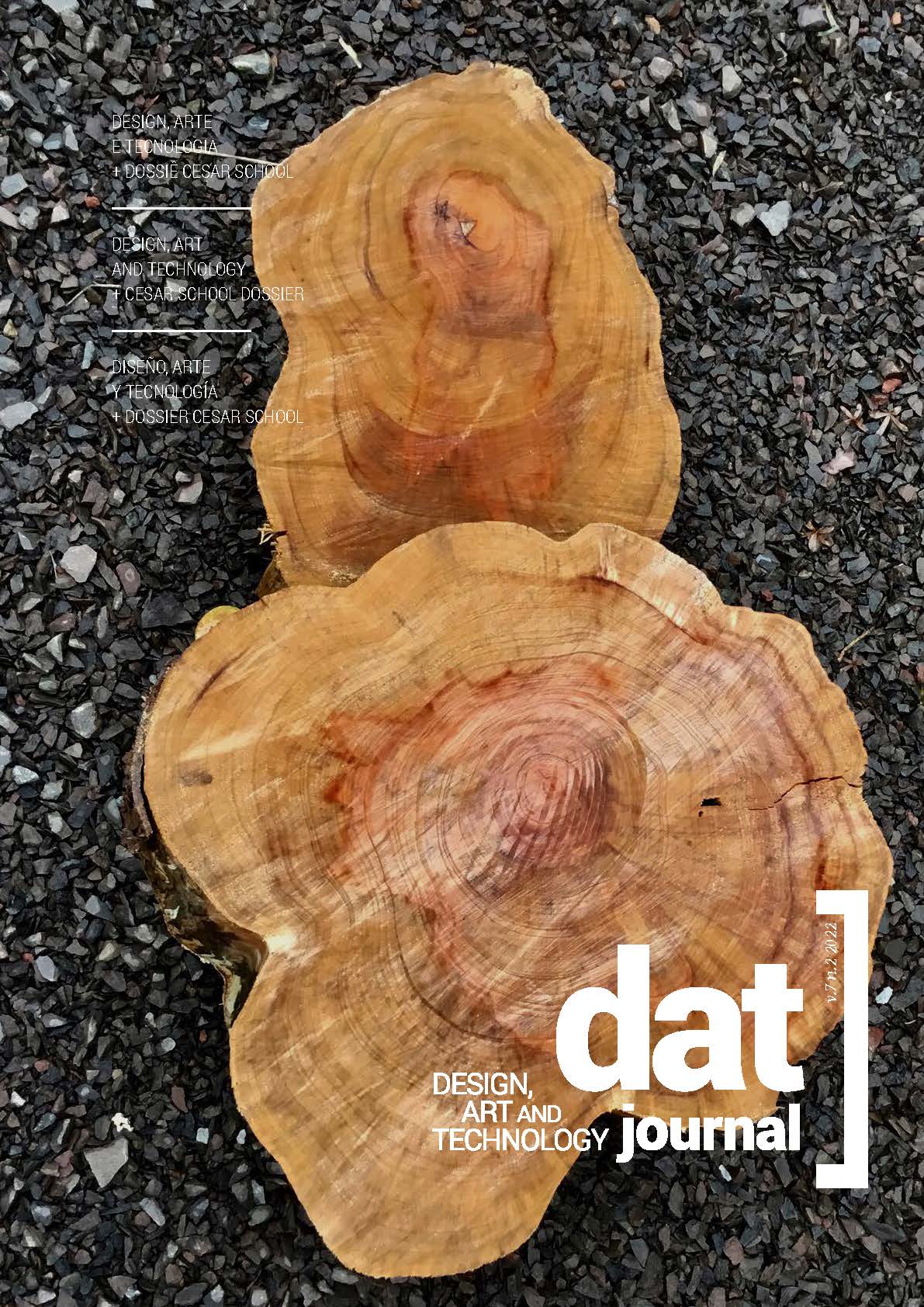Prosthesis in Design and Art
DOI:
https://doi.org/10.29147/datjournal.v7i2.606Keywords:
Protheses, Design, Art, Cyborg, TechnologyAbstract
In this paper we present the relationship between prosthetic limbs of the human body members in the context of design and art. Since ancient times, human beings have solved the problems of amputation of their limbs through prostheses, which have evolved technologically throughout history, affecting the relationship of these people with society. In the digital context, these prostheses gain a sophistication, which begin to match or even surpass the replaced biological parts themselves. Thus, the performance of runners like Oscar Pistorius, or climbers like Hug Herr, who seem to have their potential expanded with the use of prostheses, becomes controversial. The image of the cyborg begins to become increasingly present in our daily lives. We approach this theme here, in the context of art, from two points of view. The first being art in design prosthesis, when they present a design with an aesthetic that goes beyond its utilitarian function, and the second, prosthesis in art, with artists with amputated limbs, who continue their artistic production, due to these technologies and with artists, although without physical problems, the prosthesis is placed as a poetic element.
Downloads
References
ABONIZIO, Juliana (2010), “Aparências ímpares: um estudo sobre os modos de ser e aparecer dos usuários de modificações coporais extremas”, Revista Ponto Urbe, 6. 2010. DOI: https://doi.org/10.4000/pontourbe.1568
AGNES, Jones, Cristiane Maria Cassol, Denize Bataglion, Fernanda Vargas Ferreira. Identificação das causas de amputações de membros no hospital Universitário de Santa Catarina. Limbs amputation causes identification in the University Hospital of Santa Maria. In Saúde, Vol. 30 (1-2): 84-89, 2004.
BANDEIRA, Ana Paula Neres de Santana e SILVA, Karine Monteiro da. Corpo e prótese: entre a tecnologia, a arte e a ressacralização. In Anales del VI Simpósio Internacional de Innovación en Medios Interactivos. Mutaciones. ROCHA, Cleomar; GROISMAN, Martin (Orgs). Buenos Aires: Media Lab / Universidad de Buenos Aires, 2019
BARATA, Sophie Oliveira. AltLimbPro. Disponível em https://thealternativelimbproject. com/ Acesso em 01/04/2022.
BARNES, Jason. Site oficial. Disponível em https://www.jasonbarnes.me/about/ Acesso em 30/04/2022.
BLIQUEZ, Lawrence J. Prosthetics in classical antiquity: Greek, Etruscan and Roman prosthetics. In Haase W Temporini H Aufstieg und niedergang der Römischen welt II. Walter de Gruyter, Berlin and New York, 1996: 2640-2676. Disponível em https://www.degruyter.com/view/book/9783110809008/10.1515/9783110809008- 009.xml Acesso em 12/03/2022.
CYBORGS ARTS. Neil Harbisson e Moon Ribas. 2020. Disponível em https://www.cyborgarts.com/neil-harbisson Acesso em 05/04/2022.
ENGELS, Friederich. O Papel do Trabalho na Transformação do Macaco em Homem. (Escrito em 1876) 1ª Edição: Neue Zeit, 1896. Disponível em https://www. marxists.org/portugues/marx/1876/mes/macaco.htm Acesso em 03/04/2022.
FINCH, Jacqueline. The art of medicine. The ancient origins of prosthetic medicine www.thelancet.com Vol 377 February 12, 2011. DOI: https://doi.org/10.1016/S0140-6736(11)60190-6
GARCIA, Vinícius Gaspar. As pessoas com deficiência na história do mundo. 2011. Disponível em http://www.bengalalegal.com/pcd-mundial Acesso em 15/11/2021.
GLOBO ESPORTE. Biamputado, Pistorius avança às semifinais dos 400m em Londres. In Globo Esporte. 04/08/2012. Disponível em http://globoesporte. globo.com/atletismo/noticia/2011/08/cientista-afirma-que-pistorius-e-favorecido- por-conta-das-proteses.html Acesso em 01/11/2021.
HARAWAY, Donna. Manifesto ciborgue: ciência, tecnologia e feminismo-socialista no final do século XX. In TADEU, Tomaz (org). Antropologia do ciborgue: as vertigens do pós-humano. Belo Horizonte, Autêntica Editora, 2009. P. 33-118. Disponível em https://we.riseup.net/assets/128240/antropologia%20do%20ciborgue. pdf Acesso em 01/05/2022.
HUMORNEWS; CHERQUE, Felipe. As 10 transformações corporais mais bizarras do mundo. In Blasting News Brasil. 2 de julho de 2017. Disponível em https://br.blastingnews.com/curiosidades/2017/07/as-10-transformacoes-corporais- mais-bizarras-do-mundo-001819175.html Acesso em 04/04/2022
LE BRETON, David. Sinais de identidade: tatuagens, piercings e outras marcas corporais. Lisboa: Miosótis, 2004.
NORTON, Kim M. A Brief History of Prosthetics. inMotion, Manassas, v. 17, n. 7, p. 11-13, dez. 2007. Disponível em: https://www.amputee-coalition.org/wp-content/ uploads/2015/03/history_prosthetics.pdf. Acesso em 17/10/2021.
POLITECK. Biônica Extrema — Próteses com performance sobrehumana. 2015 Disponível em https://medium.com/polyteck/bi%C3%B4nica-extrema-pr%C3%B- 3teses-com-performance-sobrehumana-72a46f0756c1 Acesso em 17/10/2021
SANTAELLA, Lucia. O Homem e as Máquinas in: DOMINGUES, Diana. (org.. A Arte no Século XXI: ahumanização das tecnologias. São Paulo, UNESP, 1997. Op. Cit., pp. 33-43.
SCHIVARTCHE, Fábio. Kevin Warwick, o ciborgue número 1. O cientista inglês Kevin Warwick ligou seu cérebro a um computador. Agora, ele quer fazer telepatia eletrônica. Super Interessante, tecnologia. 2016. Disponível em https://super.abril.com.br/tecnologia/kevin-warwick-o-ciborgue-numero-1/ Acesso em 30/04/2022.
STELARC. Site oficial. Disponível em http://stelarc.org/_.php#page/2 Acesso em 01/04/2022.
TEIXEIRA, Pollyana. #Curiosidade: Você conhece a diferença entre órteses e próteses? In Blog da Saúde MG, Secretaria de Estado de Saúde de Minas Gerais, 2015. Disponível em http://blog.saude.mg.gov.br/2015/11/16/voce-conhece- a-diferenca-entre-orteses-e-proteses/ Acesso em 01/11/2021.
WONG, Gina. ResearchThe Role of Assistive Technology in Enhancing DisabilityArts. In REVIEW OF DISABILITY STUDIES: NA INTERNATIONAL JOURNAL, Volume 16, Issue, Spring 2020. Page 1-31. Disponível em https://rdsjournal.org/ index.php/journal/article/view/949/2294 Acesso em 05/04/2022.



























